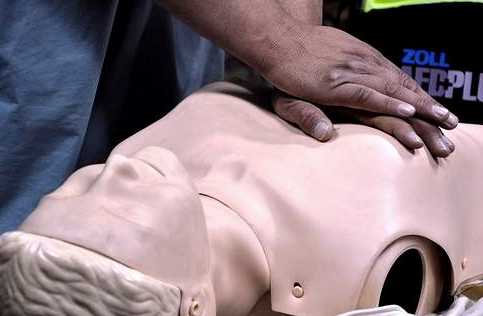It may be a life-saving skill, but a recent Canadian Red Cross poll discovered a majority of Canadians are more scared of causing harm than good while performing Cardiac Pulmonary Resuscitation (CPR).
The report stated that 51 per cent of respondents “would not be confident to attempt CPR if they saw someone who is not breathing and unconscious, and only about 22 per cent have taken a first aid/CPR course in the last three years.” Apparently, they fear both legal ramifications as well as causing further physical damage, particularly to the ribs.
However, according to Derek Dagenais, the local EMT paramedic supervisor, people don’t actually have that much to be concerned about.
“Compressions aren’t actually an issue. It’s not uncommon to see fractured ribs (after performing CPR),” said Dagenais. “It’s the mouth contact (that scares people off).”
Dagenais said people were reluctant to perform mouth-to-mouth contact because they might be scared of catching a disease if they came into contact with bodily fluids. During situations where CPR might be necessary, the patients might be coughing up blood or vomit, which could be risky for the one who has to perform CPR. Fortunately, Dagenais said they don’t usually require it anymore.
“In CPR, we don’t ventilate as often for cardiac arrest patients. Compressions are more important,” he said. “If we have people pumping blood, they’re less intimidated and aren’t getting scared off as easily.”
Dagenais said since it’s not uncommon to see fractured ribs, people trying to perform CPR shouldn’t worry about legal ramifications because they’d be protected under the Emergency Medical Aid Act, commonly referred to as the “Good Samaritan” law.
To put it simply, anyone who is attempting to give another person emergency medical assistance (such as CPR) is protected from legal repercussions unless they are found to be “grossly negligent.” For that to be the case, they would have had to do something vastly outside of their knowledge base such as attempting to perform heart surgery with no medical training.
Furthermore, Dagenais said that CPR doesn’t have any harmful effects that would lead to death. Fractured ribs are likely the only health risk people are taking when performing it. In fact, not performing CPR in the appropriate situations would likely cause more harm.
“The act of doing CPR has little negative ramifications, if any, and would actually probably help,” he said. “It increases their survival rate.”
Dagenais said that while fractured ribs are a possibility, they are still better than the alternative: death. However, they aren’t necessary. While he advises that the main focus of CPR is to “push hard and push fast,” bone damage only happens depending on the condition of the patient. For example, it might happen to elderly patients more because they have brittle bones, while younger people would be unscathed because their bones are more flexible.
According to the Red Cross report, the best way for people to alleviate these concerns would be to simply learn proper CPR. Learning it once at the age of 13 isn’t going to help.
“Knowing what to do in the critical minutes after an attack can save a life, which is why Canadians are encouraged to take a first aid course,” said the report. “A course also provides information about the ‘Good Samaritan’ legislation in most provinces and territories in Canada, which protects those who voluntarily come to the assistance of others in emergency situations.”
In Humboldt, the EMT services provide CPR training in group sessions, which anyone can request.




